Circus performers, war internment camps, and cats? Oh my! The origins of Pilates include fascinating tales from over a century ago, all starting with one man: Joseph Pilates. Some are familiar with the legendary history of Pilates practice, which includes popular rehabilitation for athletes and dancers developed from Eastern movement and meditation traditions. However, Pilates’ evolution into a well-regarded and internationally acclaimed exercise regimen that we know today has wild roots, symbolizing just how revolutionary (and fun!) Pilates can be.
Excited to learn more about how you can join the Pilates community? Contact Sheppard Method Pilates in Westwood. Contact our office to get started!
Joseph Pilates the Circus Performer
Joseph Pilates was born in Germany in 1880 and was known to be a sickly child with many health ailments. As a result, he became obsessive about his health and studied a myriad of wellness history: yoga, meditation, and even Roman and Greek exercises. By adolescence, Pilates was a trained gymnast, ample in movement and “controlling” his health. At the time, muscularity was not something the mainstream public sought after, and Pilates began touring in a German circus troupe to showcase his Grecian-God-like physique. His body was a well-trained marvel. It was here Pilates honed his aptitude for traveling and serving the public a visual example of how the human body can succeed with certain health and training regimens.
WWI Internment Camps: Pilates is Born
While earning a living as a circus performer and boxer (he even trained Scotland yard police with defense tactics!), WWI broke out in 1914. Like many Germans at the time, Pilates was arrested and incarcerated at a British internment camp on the British Isle of Man. Here, prisoners were exposed to terrible conditions, ravished with disease and injury. Effects of imprisonment included limited mobility and an overall decline in health, and Joseph Pilates, in his stature of health and fitness-guru reputation even in prison, was given the responsibility of caring for the incarcerated men.
In his cell, Pilates developed daily routines of stretching and exercise and lead his own cell block to help increase mobility, and physical and mental well-being. Later he used hospital beds and makeshift equipment to develop what we now recognize as the famous “Reformer.” Using straps and the bedframe, Pilates helped the men stretch their atrophied limbs, build strength and endurance, and increase flexibility. He incorporated what he learned as a youth from yoga and Zen meditation of breathing to this exercise technique, adopting the careful blend of mental and physical wellness Pilates is known for today with conscious breathing. As result, lung health, stress relief, and overall mental wellness were also reported among the prisoners. In fact, after the Great Influenza reached and spread across the island, it was said that Pilates’ men were unaffected by the outbreak.
“Contrology” and Animal Inspiration in Pilates Practice
In 1919, Joseph Pilates was released and immediately set out to spread the gospel of his newly developed—and effective—exercise regimen. He moved to New York City and began working with ballet dancers and athletes with his new wife, Clara. But his evolving inspirations did not cease, nor did they become less bizarre. Pilates was known to be critical of Americans’ outlook on health, criticizing the amount spent at their desks and downplaying the importance of daily movement. On his time on the British Isle of Man, Pilates was said to admire the agility and energy of the island’s cats as he watched them chase and catch their prey. He studied how these animals stretched, moved, and lived in their bodies. The cats made a lasting impact on Joseph, and he believe that the human animal also had the capacity for agility, strength, and health.
As he worked in New York with Clara at their studio through the 1920s and up until his death, Pilates considered his work “Contrology” – which he considered to be representative of his belief that we can control our health and wellness through designated movement routines. Soon, it would not just be athletes and ballerinas who embraced his practice.
Pilates: A Global Fitness Phenomenon
From the start of Pilates’ instruction in New York in 1926 to his death at age 86 in 1967, two additional official studios were opened by his protégées, one of which by Ron Fletcher in Westwood. There were also several other renditions of Pilates practice across gyms around the country. At this point in 1970, Pilates was a popular Hollywood trend, attracting the biggest and brightest stars of the time. It wasn’t until the 1990s that Pilates would really take off among households as a revolutionary counterpoint to fitness trends at the time. As opposed to the previous focus on high-intensity aerobics and heavy weight lifting, Pilates offered a healthier, more inclusive option to fitness. The revolutionary, counter-culture of Pilates persisted.
Pilates remains an inclusive and revolutionary practice that welcomes people from all walks of life. At Sheppard Method Pilates, we embrace the alternative quality of Joseph Pilates’ origins that sought to look deeper at health and wellness than a more mainstream viewpoint allows. In fact, Risa Sheppard, the founder of Sheppard Method Pilates, studied under Ron Fletcher himself. At our Westwood studio, the Sheppard Method approach values Pilates’ fitness legacy by customizing each person’s practice and approach to meet their unique and individual needs.
Be inspired by Pilates’ wild roots and have fun with us – call Sheppard Method Pilates today to get started!

